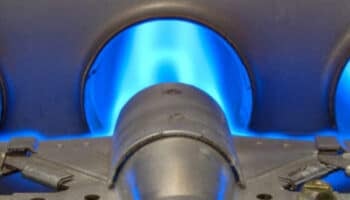Does your furnace heat unevenly?
That sucks! I understand how frustrating it can be when you can’t stay in a room because it’s freezing, even when your furnace is running.
Luckily, you’ve come to the right place to fix the issue.
If your furnace heats unevenly, you’ll need to check the thermostat’s location, ensure all vents are free of obstructions, and clean or replace the air filter. However, if the issue persists, please inspect the ductwork for leaks and check the insulation in your home.
Read on to solve your furnace issues!
Fixing Uneven Furnace Heating: 6 Steps
In this section, I’ll walk you through the different factors that could be causing your furnace to heat unevenly and provide various solutions.
Are you ready? Let’s get started!
#1 Check the Thermostat’s Location
When fixing a furnace that is heating unevenly, I always start by checking the thermostat’s location.
The thermostat is responsible for monitoring the room temperature and signaling your furnace to turn on or off accordingly. Unfortunately, if the thermostat is near heat sources, like a sunny window, it can cause the furnace to turn off prematurely, leaving other parts of the house cold.
On the contrary, if the thermostat is near drafts, it can make the furnace run longer, causing other areas in your home to become too warm.
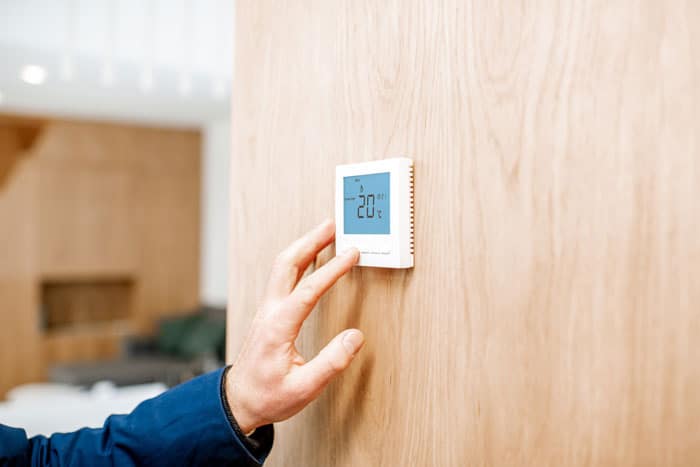
Therefore, if your furnace heats unevenly, it’s important to make sure the thermostat is away from direct sunlight, doors, lamps, appliances, or windows. Consider placing your thermostat in a neutral and central location to prevent uneven heating.
Note: Keep in mind that relocating your thermostat can be a bit challenging as it involves some wiring and electrical work. So, I recommend calling a licensed HVAC technician for assistance with the installation.
#2 Check the Vents
I find that when a furnace heats unevenly, it’s typically due to blocked vents.
The vents distribute the warm air generated by your furnace throughout your home. So, if they’re obstructed, airflow will be restricted, resulting in certain rooms staying cold.
To fix the issue, simply locate the vents in each room and check if any furniture or other objects are obstructing the vents. Rearrange the items to ensure proper airflow and fix the uneven heating issue.
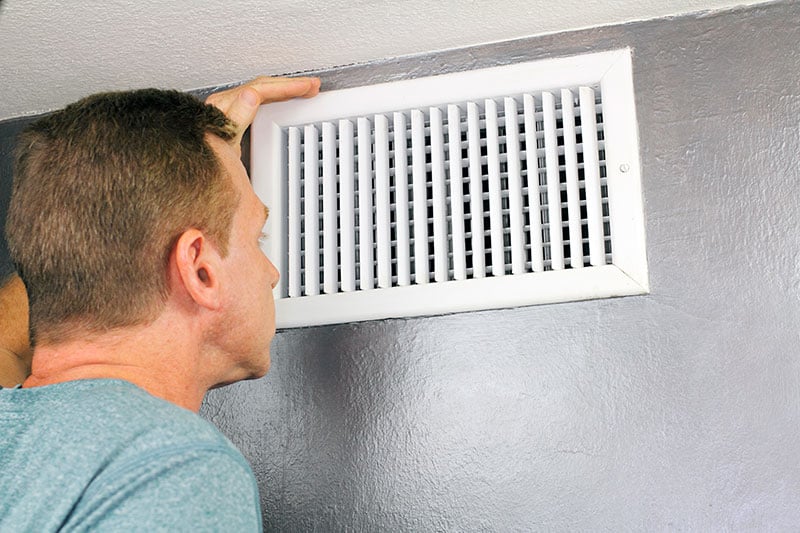
While you’re at it, please remove the vent covers using a screwdriver and give them a good cleaning. You can use a vacuum or brush. Try cleaning the covers with warm, soapy water if they’re very dirty.
Once you’ve cleaned the vent covers, please let them air dry before reattaching them to the duct.
#3 Clean or Replace the Air Filter
If your furnace is still heating unevenly, it’s time for us to check the air filter.
The air filter is responsible for collecting dust, dirt, dander, and other allergens to prevent them from entering your furnace. However, airflow will be restricted if you haven’t replaced the filter in a while. As a result, your furnace will struggle to distribute warm air evenly.
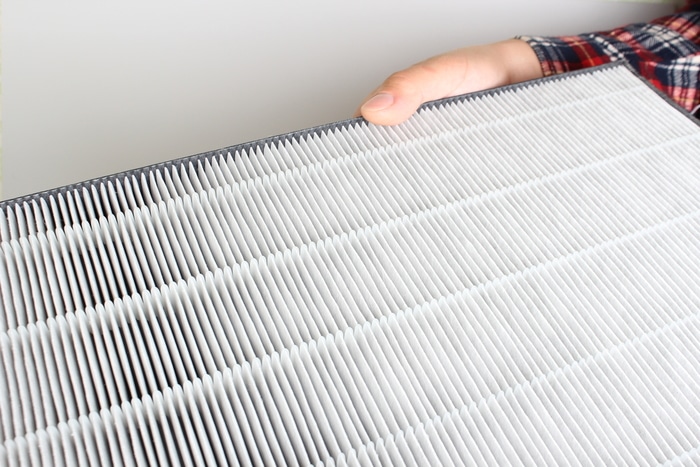
Don’t worry, though. Cleaning or replacing your furnace’s air filter is very simple; you’ll just need to:
- Turn off your furnace and remove the access panel.
- Locate the filter and carefully slide it out of its housing. If you can’t find the filter, please click here or refer to the owner’s manual for detailed instructions.
- If your furnace’s filter is reusable, please clean it using a vacuum or an old toothbrush. You can also rinse it with water and let it air dry before reattaching it.
- If the air filter is disposable, very dirty, or damaged, please replace it with a new, compatible one.
- Slide the cleaned or new air filter into its housing and reattach the front cover.
Keep in mind that you should replace the filter every 1 to 3 months to ensure proper airflow and prevent different issues, such as soot buildup.
Once you’ve followed the instructions above, please turn your furnace back on. If it’s still heating unevenly, there’s probably an issue with the ductwork. Read on to learn more.
#4 Inspect the Ductwork
In my experience, problems with the ductwork can also explain why your furnace heats unevenly.
The ducts are responsible for supplying air to all parts of your home. Over time, the materials around the ducts can loosen, causing the heated air to escape. As a result, some rooms will feel colder or warmer than others.
Note: Indications of ductwork issues include higher energy bills, reduced airflow, and inconsistent temperature settings.
In such cases, you’ll need to visually inspect the ductwork and look for any obvious signs of damage. If you happen to spot a leak, you can seal it using mastic sealant or metal tape.
While checking the ducts, I usually advise using a vacuum or long brush to clear away any dust, dirt, or debris that could be obstructing airflow.
Keep in mind that if you’re not an experienced DIYer, it’s best to call an HVAC specialist. They have the necessary tools and expertise to address ductwork issues safely.
#5 Check the Insulation
Now, it’s time to check the insulation in your home.
The insulation is responsible for keeping the warmth generated by your furnace inside, even when it’s cold outside. However, poor insulation can allow warm air to escape and cold air to seep in, leading to uneven heating and higher energy bills.
So, if you notice drafts or find that one room is colder than the rest, it’s essential to inspect your home’s insulation.
Here’s a simple way to check the level of insulation within your walls:
- Turn off the power to the wall outlet you’re about to inspect to prevent electrical hazards.
- Carefully remove the power outlet cover using a screwdriver.
- Use a flashlight to see inside the wall cavity and check the insulation.
- If you find that the insulation is thin or deteriorated, your home could benefit from better insulation.
It’s also important to identify the rooms in your home that are more prone to heat loss. Seal any air leaks around windows, door frames, or electrical outlets using caulk or weatherstripping.
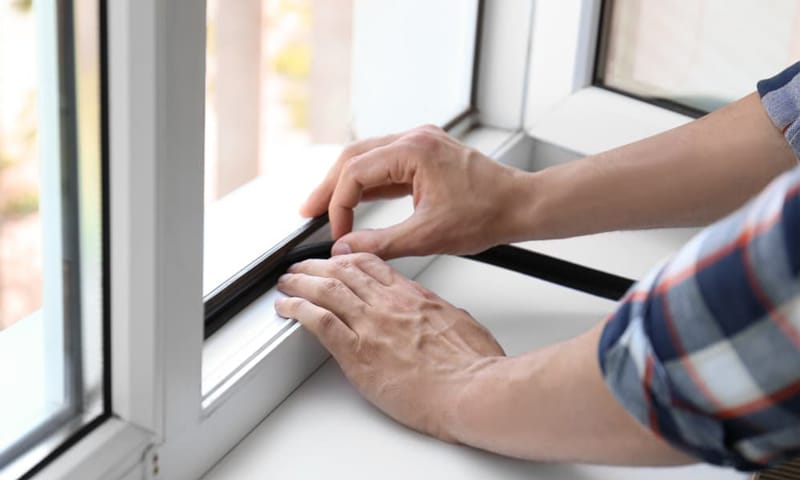
When you’re ready to upgrade your home’s insulation, please select the type of material that best suits your needs. When choosing the type of insulation, you’ll need to consider the room you’re insulating, your budget, and the R-value (resistance to heat flow).
Click here to check the recommended R-values.
Keep in mind that while insulating your home can be a DIY project, some hard-to-reach areas require the expertise of a professional.
#6 Consider the Size of Your Furnace
If you’re still dealing with uneven heating issues, I recommend checking the size of your furnace.
You see, an oversized furnace can heat some rooms too quickly and then turn off before the entire home reaches the temperature set on the thermostat. On the other hand, an undersized furnace will struggle to maintain the desired temperature in all rooms, leading to uneven heating.
Therefore, it’s important to ensure that your furnace matches your home’s heating needs and size. A correctly sized furnace will not only solve the problem of uneven heating but also save you money on energy bills.
Unfortunately, purchasing a new furnace can be quite expensive. So, if you’re not prepared for a replacement just yet, consider using a space heater in colder rooms when dealing with an undersized furnace. In the case of an oversized furnace, turning on the ceiling fan can help distribute the heat more evenly.
Don’t forget that it’s also important to seal any air leaks and properly insulate your home. You can also adjust the thermostat to prevent the furnace from running continuously.
Remember, these are only short-term solutions. If your furnace is either too small or too large for your home, you will eventually need to replace it.
Wrapping Up: Furnace Fixes for Even Heating
Hopefully, now you know how to prevent your furnace from heating unevenly.
Remember to make sure your thermostat is away from heat sources or drafts and clear any obstructions from the vents. It’s also important to clean the air filter, inspect the ductwork, and seal any air leaks.
Don’t forget to check your home’s insulation and consider the size of your furnace.
Thank you so much for reading this quick article. If you ever experience a different issue while using your furnace, please check out our related posts below.
Good luck!







